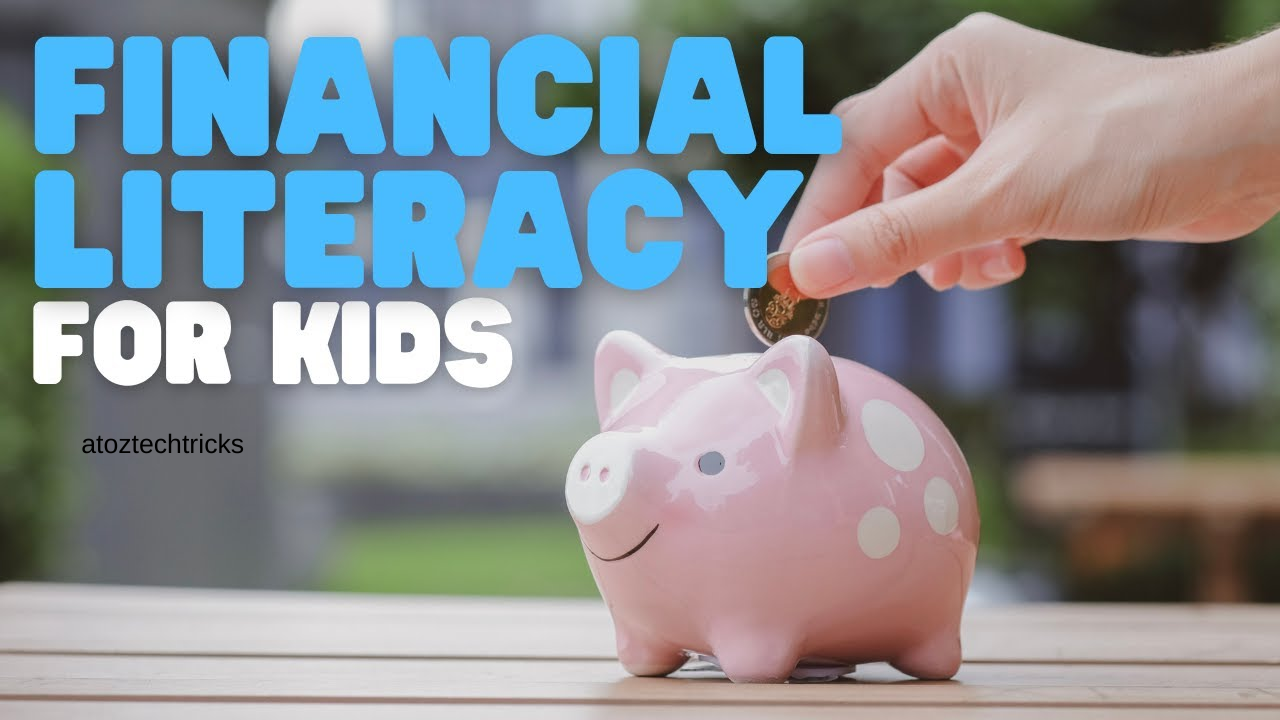Introducing Children to Credit and Debt: A Comprehensive Guide
Teaching children about credit and debt is crucial in today’s financial landscape. As they grow up, understanding these concepts will help them make informed decisions, avoid common pitfalls, and develop healthy financial habits. This comprehensive guide aims to introduce children to the fundamentals of credit and debt, offering practical advice for parents and guardians on how to educate their children effectively.
1. The Basics of Credit and Debt
What is Credit?
Credit is essentially the ability to borrow money or access goods and services with the understanding that you’ll pay later. It’s a financial tool used in various forms, such as credit cards, loans, and mortgages. Understanding credit helps children grasp how borrowing works and the responsibilities that come with it.
Preparing Children for Financial Independence: A Comprehensive Guide
Key Concepts:
- Credit Score: A numerical representation of a person’s creditworthiness. It affects the ability to borrow money and the interest rates on loans.
- Interest Rates: The cost of borrowing money, expressed as a percentage. Higher rates mean higher costs over time.
- Credit Limit: The maximum amount that can be borrowed or charged to a credit account.
What is Debt?
Debt arises when money is borrowed and must be repaid. While some debt can be beneficial, such as student loans or mortgages, excessive or poorly managed debt can lead to financial problems. Teaching children about debt helps them understand the consequences of borrowing and the importance of repayment.
Key Concepts:
- Types of Debt: Includes credit card debt, student loans, car loans, and mortgages.
- Repayment Terms: Conditions under which debt must be repaid, including monthly payments, interest rates, and the duration of the loan.
- Debt-to-Income Ratio: A measure of how much debt a person has compared to their income. A high ratio can indicate financial strain.

2. The Importance of Financial Education
Financial education is crucial for children to make informed decisions about credit and debt. Early education helps build a solid foundation for responsible financial behaviour.
Building Financial Literacy
Start by introducing basic financial concepts. Use age-appropriate language and examples that relate to their daily lives. For younger children, focus on saving, spending, and basic math skills. As they grow, introduce more complex topics like budgeting, saving for goals, and understanding credit and debt.
Strategies for Teaching Financial Literacy:
- Use Real-Life Examples: Discuss how you use credit and manage debt in your daily life. Share examples of responsible financial decisions and their consequences.
- Games and Activities: Utilize games and activities that teach financial concepts. For example, board games like Monopoly can introduce concepts of money management and investment.
- Educational Tools: Leverage apps and online tools designed for children to learn about money. Many of these tools offer interactive ways to understand saving, spending, and earning.
Encouraging Smart Financial Habits
Encourage your child to develop good financial habits early on. This includes setting savings goals, tracking spending, and understanding the value of money. Promote a positive attitude toward saving and responsible borrowing.
Tips for Encouraging Smart Financial Habits:
- Set Savings Goals: Help your child set and achieve savings goals for things they want. This teaches the value of delayed gratification and the importance of budgeting.
- Use Allowances Wisely: If you provide an allowance, use it as an opportunity to teach budgeting. Encourage your child to allocate money for saving, spending, and giving.
- Discuss Financial Decisions: Involve your child in family financial decisions, such as budgeting for a vacation or managing household expenses. This provides practical experience and context.
Handling Unexpected Financial Situations with Children: A Comprehensive Guide
3. Introducing Credit and Debt Concepts
As children mature, it’s important to introduce more detailed concepts of credit and debt.
Explaining Credit
Start by explaining what credit is and how it works. Use simple terms and examples they can relate to, such as borrowing money to buy a toy and repaying it with their allowance.
Key Points to Cover:
- How Credit Works: Explain that credit involves borrowing money and agreeing to pay it back later. Discuss how credit can be used for purchases or loans.
- Credit Cards: Describe how credit cards work, including the concept of charging purchases and paying the bill later. Explain the importance of paying off the balance to avoid interest charges.
- Building Credit: Introduce the idea of building a positive credit history by making timely payments and managing credit responsibly. Discuss how a good credit history can benefit them in the future.
Understanding Debt
Discuss the concept of debt, including why people borrow money and the importance of repaying it. Use examples that illustrate how debt can be useful (e.g., student loans for education) and how it can become problematic if not managed properly.
Key Points to Cover:
- Different Types of Debt: Explain various types of debt, such as credit card debt, student loans, and car loans. Discuss the purpose of each type and how they are repaid.
- The Cost of Debt: Illustrate how interest increases the total cost of borrowing. Use examples to show how paying only the minimum on a credit card can lead to high-interest charges over time.
- Managing Debt: Teach the importance of budgeting and planning to manage debt. Discuss strategies for avoiding unnecessary debt and the risks of borrowing beyond one’s means.
4. Practical Exercises and Tools
Hands-on experiences can reinforce financial concepts and help children understand credit and debt better.
College Savings: A Comprehensive Guide to Building a Future Fund
Budgeting Exercises
Create simple budgeting exercises to teach your child how to manage money effectively. Use a pretend budget to help them allocate funds for different categories, such as saving, spending, and giving.
Budgeting Activities:
- Create a Mock Budget: Have your child create a budget for a fictional scenario, such as planning a birthday party. Include categories for expenses and savings.
- Track Spending: Encourage your child to track their spending over a month. Use a journal or app to record purchases and compare them to their budget.
Credit and Debt Scenarios
Present different scenarios to help your child understand how credit and debt work in real life. Discuss various situations, such as using a credit card for a purchase or taking out a loan, and explore the outcomes.
Scenario-Based Learning:
- Credit Card Use: Describe a scenario where your child uses a credit card to buy a video game. Discuss the importance of paying off the balance and the consequences of not doing so.
- Loan Repayment: Create a scenario where your child takes out a loan to buy a bike. Discuss how they will repay the loan and the impact of interest on the total cost.
Financial Tools for Kids
Introduce financial tools and resources designed for children. These tools can provide interactive and engaging ways to learn about money management.
Recommended Tools:
- Banking Apps for Kids: Many banks offer child-friendly apps that allow kids to manage their allowance, set savings goals, and learn about banking.
- Educational Games: Explore online games and simulations that teach financial concepts. Look for games that involve budgeting, saving, and investing.

5. The Role of Parents and Guardians
As a parent or guardian, your role in teaching credit and debt is pivotal. Your approach to financial education can shape your child’s attitude toward money and their future financial behaviour.
Lead by Example
Children often model their behaviour after their parents. Demonstrate responsible financial practices, such as budgeting, saving, and managing debt. Share your financial decisions and the reasoning behind them.
Leading by Example:
- Discuss Your Finances: Share age-appropriate details about your financial decisions and how you manage credit and debt.
- Model Responsible Behavior: Show your child how to handle credit and debt responsibly by paying bills on time and avoiding unnecessary debt.
Encourage Open Communication
Create an environment where your child feels comfortable discussing financial matters. Encourage them to ask questions and express their thoughts about money, credit, and debt.
Fostering Open Communication:
- Regular Discussions: Have regular conversations about money, including how you manage credit and debt.
- Answer Questions: Be open to answering questions about financial topics. Provide clear, simple explanations that match your child’s age and understanding.
Provide Support and Guidance
Offer support and guidance as your child navigates financial decisions. Assist with budgeting, saving, and managing credit as they grow older.
Supporting Your Child:
- Financial Coaching: Offer guidance on budgeting and managing money. Help them develop a budget and track their spending.
- Credit Education: As they approach adulthood, provide information on building credit, applying for credit cards, and managing debt responsibly.
6. Preparing for the Future
As children grow into teenagers and young adults, their understanding of credit and debt becomes increasingly important. Prepare them for financial independence by continuing to build on the foundation laid earlier.
Building Financial Independence
Encourage your child to start managing their finances independently. Help them set up a bank account, apply for a credit card, and create a budget for their expenses.
Steps for Financial Independence:
- Open a Bank Account: Help your child open a savings or checking account. Teach them how to manage their account, track transactions, and save money.
- Apply for Credit: If appropriate, guide them through the process of applying for a credit card. Discuss the responsibilities involved and the importance of using credit wisely.
- Create a Budget: Assist them in creating a budget for their income and expenses. Emphasize the importance of saving, spending wisely, and avoiding unnecessary debt.
Preparing for Major Financial Decisions
Prepare your child for major financial decisions they will face as adults, such as buying a car, applying for student loans, or renting an apartment.
Preparing for Major Decisions:
- Car Purchase: Discuss the financial aspects of buying or leasing a car, including loan options, insurance, and ongoing costs.
- Student Loans: Explain the process of applying for student loans, managing loan repayments, and understanding interest rates.
- Renting an Apartment: Provide information on renting an apartment, including budgeting for rent, utilities, and other living expenses.
Introducing children to credit and debt is a vital part of their financial education. By teaching them the basics of credit and debt, building financial literacy, and providing practical experiences, you can help them develop responsible financial habits and make informed decisions. As a parent or guardian, your role is to lead by example, encourage open communication, and provide support as they navigate their financial journey. With the right guidance, your child will be well-prepared to handle credit and debt responsibly and achieve financial success in the future.




Post Comment